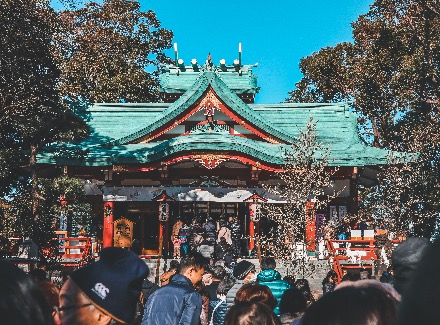What to Eat in Japan During Summer: Refreshing Dishes to Beat the Heat!
If you’re spending summer in Japan, you’ll quickly realize the heat and humidity can be intense. But one of the best ways to beat the weather, and enjoy the season, is through food! And Japanese summer meals are all about staying cool and eating light.
From chilled noodles to refreshing drinks you’ll only find this time of year, there’s no shortage of seasonal flavors to try. Even convenience stores get in on it, with limited-time treats and drinks that change with the weather.
If you’re visiting, living, or interning in Japan, this guide will walk you through some of the indispensable dishes of Japanese summer.
Eating with the Season
In Japan, seasonal eating is an important part of everyday life. The word shun (旬) captures this idea: it’s about timing your meals to match when ingredients are at their freshest and most flavorful. In summer, that means meals become lighter, colder, and easier to digest; perfect for getting through long, muggy days.
You’ll start to see a shift not just in ingredients, but in how food is prepared and presented. Meals lean toward soft textures, simple broths, chilled servings, and color palettes that feel refreshing to look at. Ingredients like grated daikon, vinegar, citrus (including yuzu), shiso (perilla), and ginger are all common in summer dishes for their flavor and for their cooling and digestive properties.
For anyone working or doing an internship in Japan, being aware of what’s in season can really shape your daily routine. Just like in many countries, seasonal produce tends to be cheaper and easier to find, while out-of-season items either vanish from shelves or shoot up in price. Restaurants and even konbini build their offerings around what’s fresh, so being familiar with what’s in season helps when browsing menus or figuring out what to make for dinner.
🍜 Cold Noodle Dishes You’ll See Everywhere
When the summer heat kicks in, hot meals start to lose their appeal, and that’s where Japan’s cold noodle dishes step in! Light, refreshing, and easy on the stomach, they’re an essential of summer food in Japan and can be found everywhere from convenience stores to traditional soba shops.
Sōmen (そうめん)
These ultra-thin wheat noodles are usually served chilled on a bed of ice, with a light soy-based dipping sauce called mentsuyu. They’re a common homemade lunch and are especially fun during nagashi sōmen: a seasonal activity where noodles are sent flowing down a bamboo chute filled with cold water, and everyone tries to catch them with chopsticks, making it a perfect Japanese summer tradition.
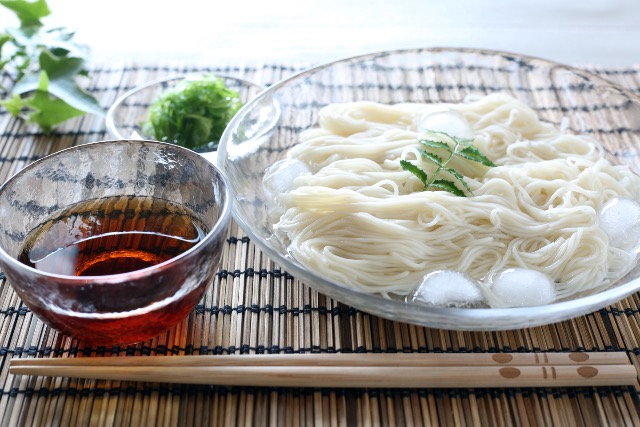
Zaru Soba (ざるそば)
Buckwheat noodles served cold on a bamboo mat (zaru) might seem simple, but they’re packed with flavor and texture. The zaru keeps the noodles elevated, preventing them from sitting in water, which helps preserve their firmness and keep them cool and fresh for dipping.
The noodles are dipped into chilled tsuyu sauce, often with a touch of wasabi or green onions. Zaru soba is also considered a healthy option due to the high fiber and nutrients in buckwheat, making it a go-to for anyone trying to stay light during the hotter months.

Hiyashi Chūka (冷やし中華)
Literally meaning “chilled Chinese-style noodles,” this dish is colorful, filling, and widely loved. Served cold with toppings like shredded cucumber, tomato, thin omelet strips, and ham or chicken, it’s dressed with either a tangy sesame or soy-vinegar sauce. Hiyashi chūka is a true summer classic in Japan, balancing flavor, texture, and a cooling effect that hits the spot on muggy days.

🍚 Rice Dishes and Light Meals
In Japan, rice doesn’t disappear from the table just because it’s hot out, summer simply brings a different way of serving it. Steaming bowls give way to lighter preparations, often paired with cooling sides like pickles, cold tofu, or chilled vegetables. The goal is to satisfy hunger while avoiding weighing yourself down in the heat!
Ochazuke (お茶漬け)
This is one of the simplest yet most comforting meals you’ll come across. It’s made by pouring green tea or dashi broth (for a richer, savory flavor) over a bowl of rice, topped with savory ingredients like pickled plum (umeboshi), grilled fish, or nori. In summer, it’s often made with lukewarm or chilled tea, giving it a clean, hydrating quality that’s perfect when you want something light and quick.
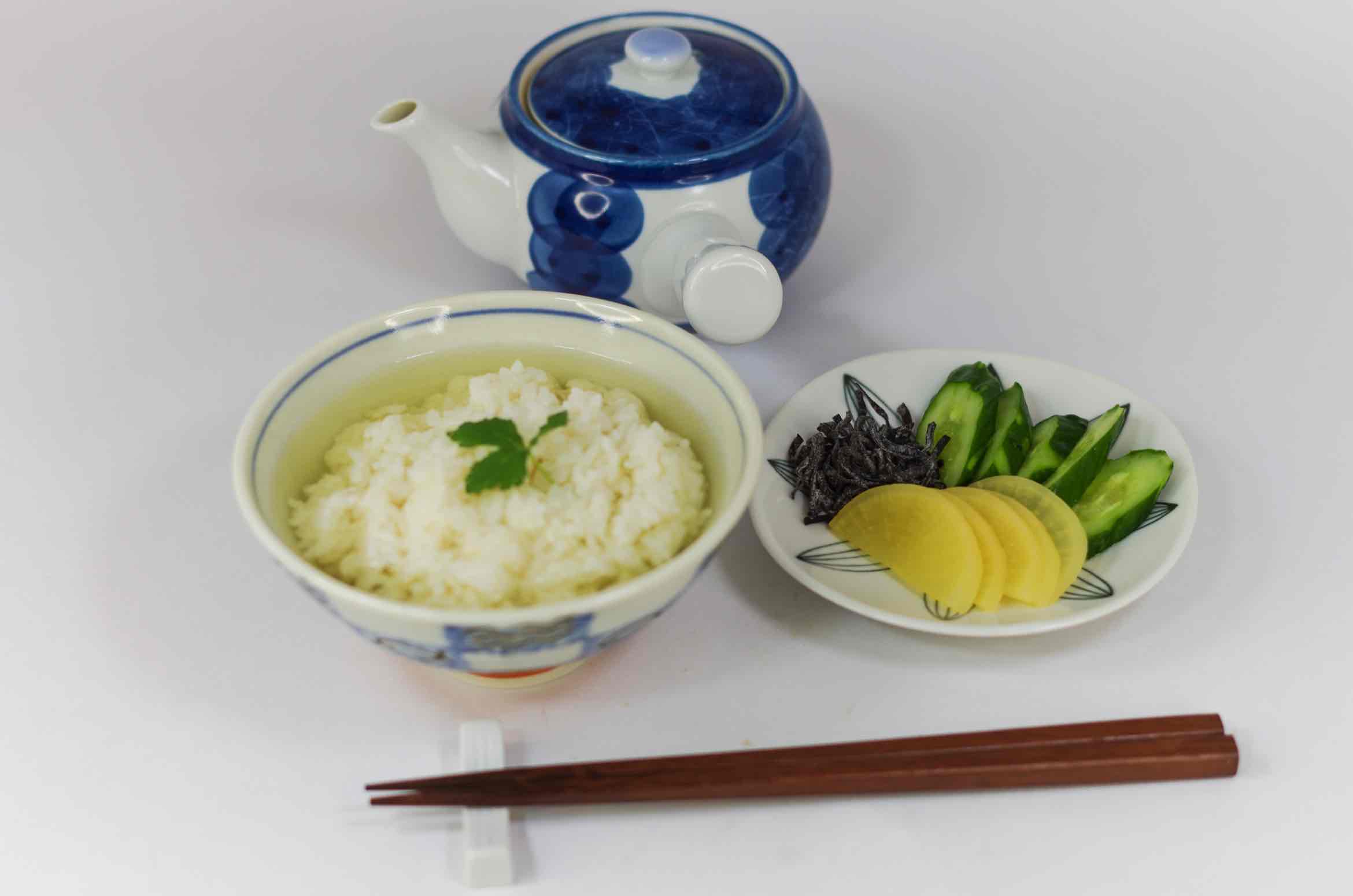
Unagi-don (うなぎ丼)
Grilled eel over rice, may seem heavy at first glance, but it’s traditionally eaten in midsummer during Doyo no Ushi no Hi (Day of the Ox) to combat heat fatigue. Eel is rich in protein and nutrients, and this dish is considered a stamina booster, making it a seasonal staple despite its richness.
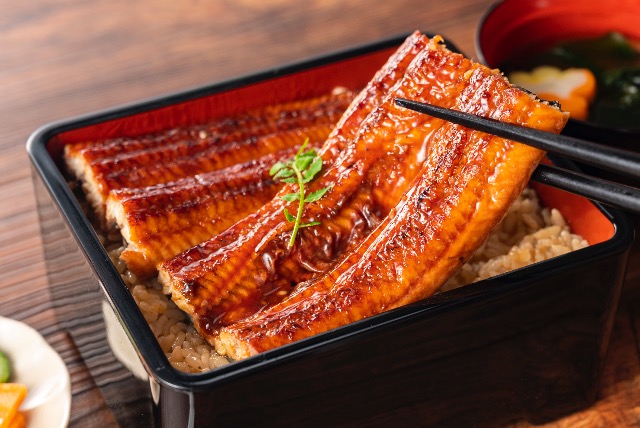
Inarizushi (いなり寿司)
Rice wrapped in sweetened tofu pouches, is a low-effort, no-heat option commonly found in bento boxes. While it’s not exclusively a summer dish, its characteristics, served at room temperature, easy to digest, and often paired with chilled sides or pickles, make it especially well-suited for warmer days. It’s portable, satisfying without being heavy, and a popular choice for picnics, quick lunches, or snack breaks when it’s just too hot for a full meal.
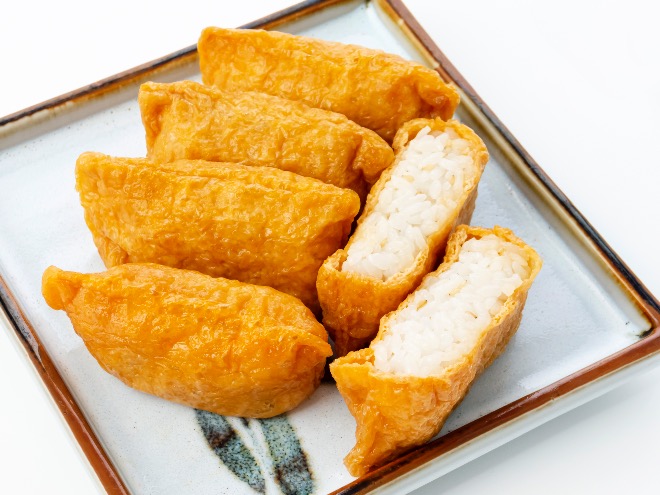
🫛Light and Cooling Summer Sides
When summer in Japan hits its peak, even the smallest dishes in Japan adapt to the season. From quick snacks to chilled sides, many meals include ingredients and textures chosen to cool the body and ease digestion. You’ll come across many of them at local izakaya, tucked into bento boxes, or stocked on convenience store shelves, making them easy to try even on a busy day.
Sunomono (酢の物) are light, vinegared dishes that offer a sharp, cooling contrast to heavier mains. While cucumber is the classic choice, sunomono (which literally means "vinegared things") can also feature seaweed, octopus, or daikon, making it a versatile and easy-to-digest side. The tangy vinegar flavor gives your palate a reset, especially welcome on humid days.
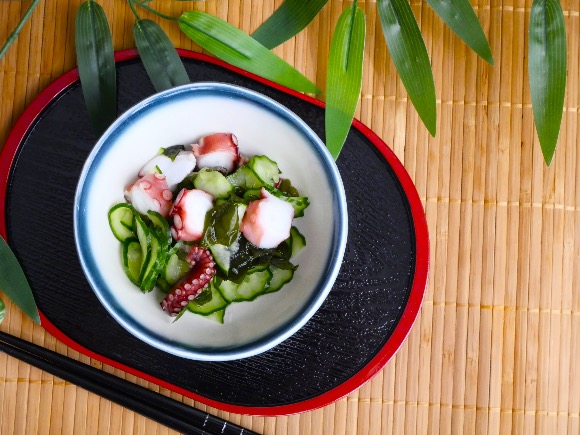
Hiya-yakko (冷奴) is another summer specialty: chilled tofu served simply with toppings like grated ginger, green onions, bonito flakes, or a drizzle of soy sauce. Its mild flavor and cold texture make it a refreshing addition to any meal, whether at home or out.
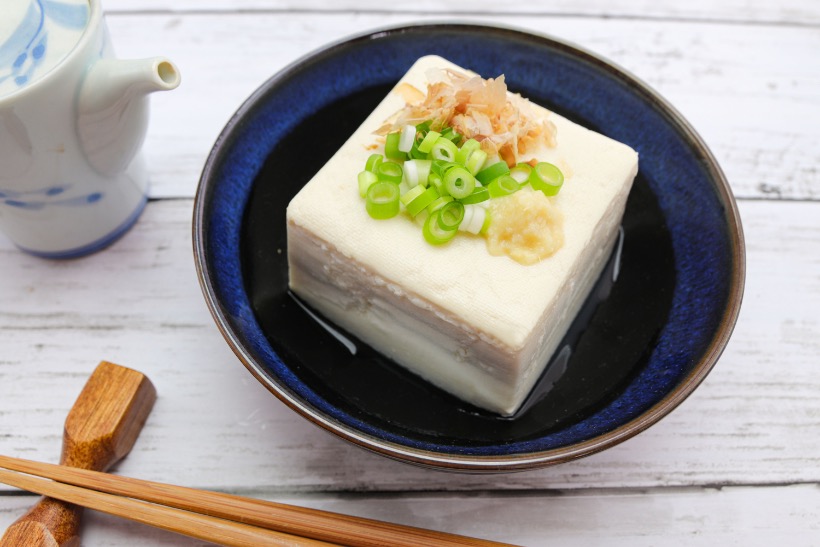
Edamame (枝豆) might be one of the most familiar names on the list. Boiled and salted young soybeans commonly enjoyed as a snack, especially in summer evenings or at izakaya (Japanese pubs), and their seasonal popularity peaks in warmer months.

Tokoroten (ところてん) is a bit more unusual: jelly-like noodles made from agar (kanten; seaweed) and served cold. Depending on the region, they’re paired with vinegar-based sauces for a savory bite or with sweet syrup (kuromitsu) as a dessert. Tokoroten doesn’t have much flavor on its own, which is exactly what makes it so versatile and easy to pair with a variety of toppings depending on the region or mood.

🍧 Summer Desserts and Sweet Treats
Even during the hottest summer days in Japan, cooling down with something sweet is almost a daily ritual. But instead of rich or creamy desserts, many Japanese summer treats focus on light textures, subtle flavors, and ingredients that feel refreshing and not heavy.
Kakigōri (かき氷) is probably the most popular choice: finely shaved ice topped with flavored syrups like matcha, strawberry, lemon, or melon, and sometimes finished with a drizzle of condensed milk or a scoop of sweet red beans. You’ll spot it at nearly every summer festival and on café menus.
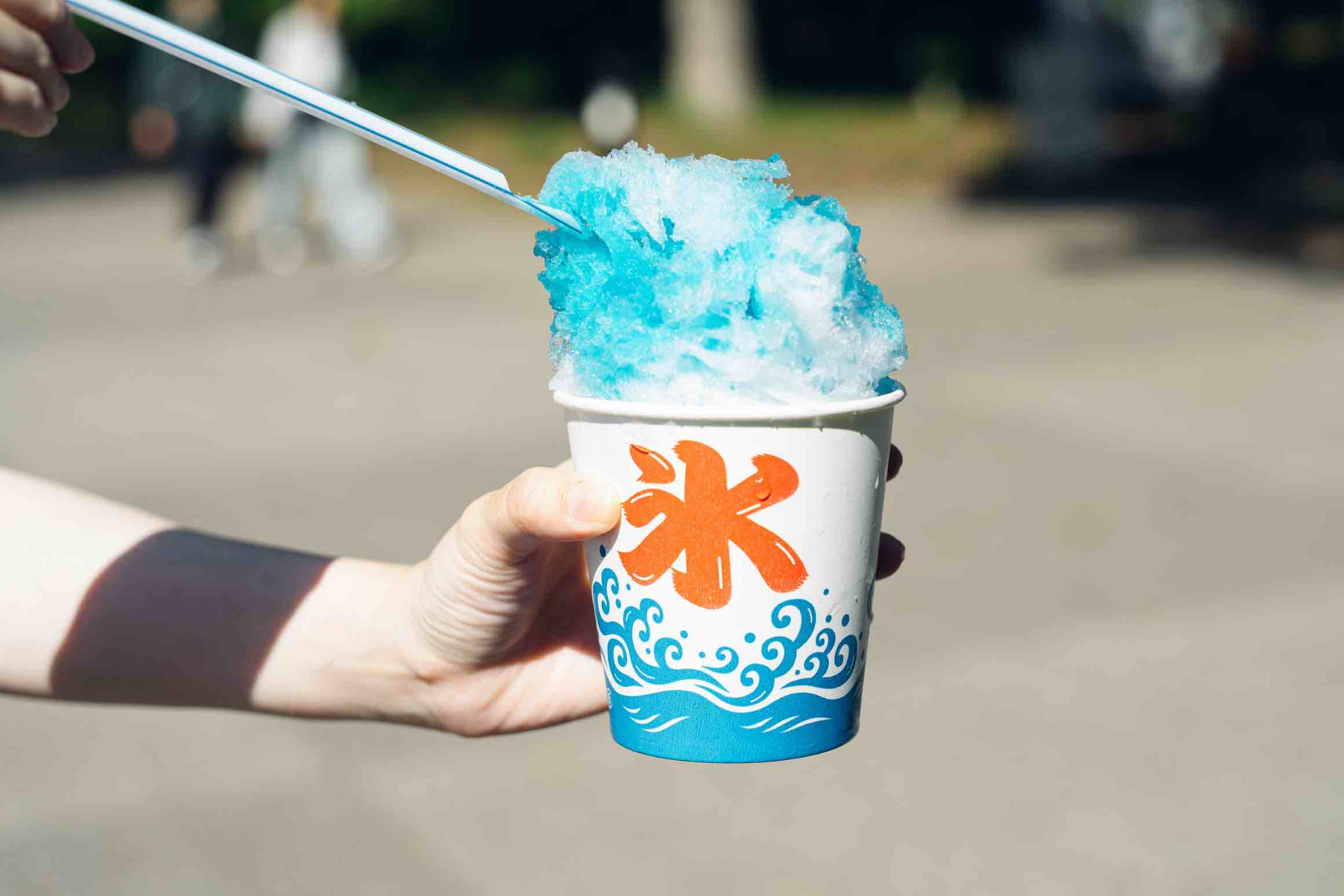
Anmitsu (あんみつ) offers a more traditional twist. This chilled dessert combines cubes of agar jelly with sweet toppings like fruits, red bean paste (anko), and kuromitsu (a dark sugar syrup). It’s a great way to enjoy a variety of textures and flavors in one bite.
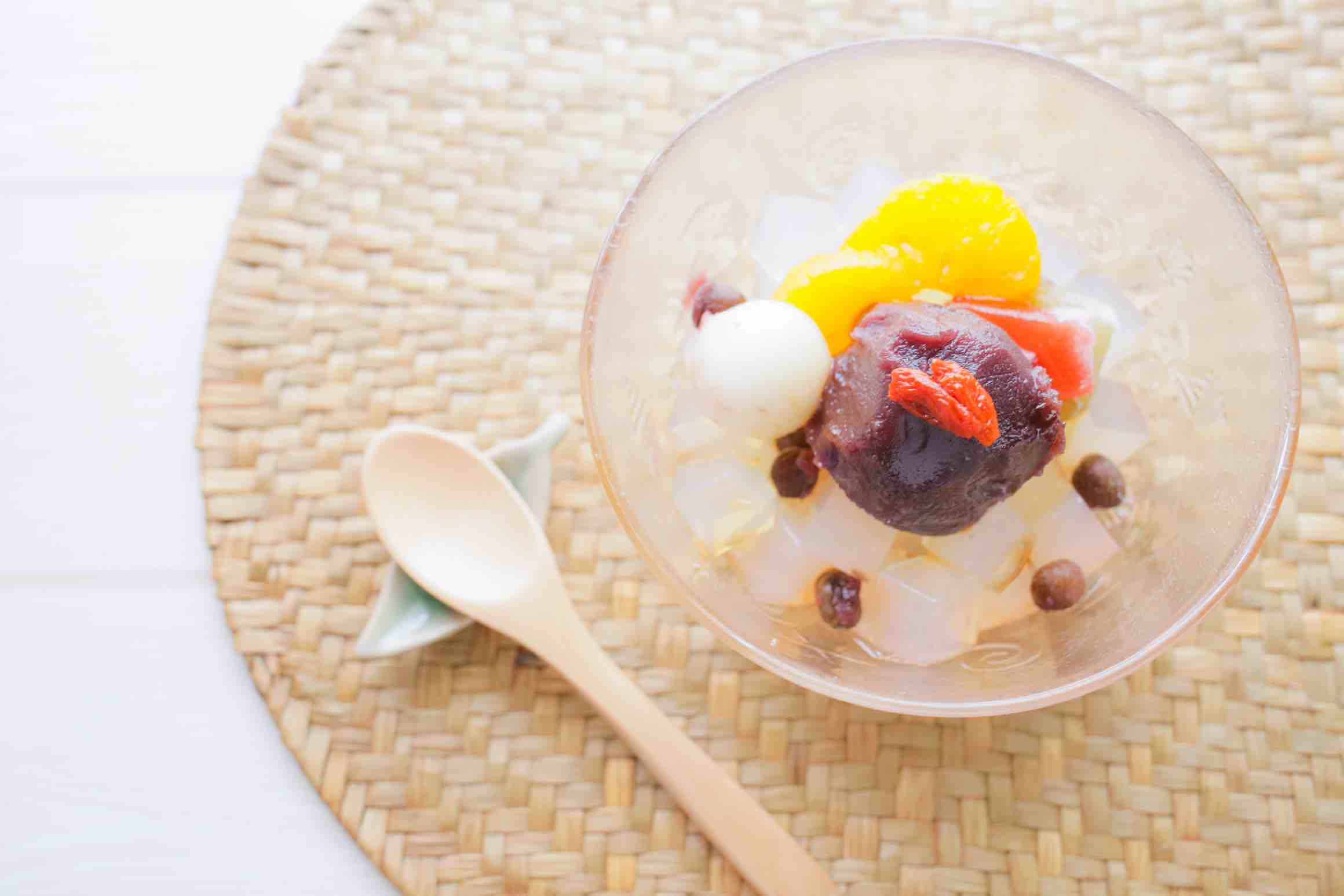
Mizu Yōkan (水ようかん) is another summer favorite. Unlike regular yōkan, this version has a much higher water content, giving it a delicate, lighter, almost creamy consistency. Served chilled, it’s a subtle but deeply satisfying treat during hot afternoons.

Finally, Warabi Mochi (わらび餅) is a jelly-like mochi made from bracken starch and often coated in kinako (roasted soybean flour). It’s soft, slightly chewy, and best enjoyed cold; a popular sight at street stalls and summer gift boxes alike.

🍦Limited-Time Summer Drinks and Convenience Store Finds
Summer in Japan means convenience stores go all out with limited-edition drinks, snacks, and icy treats. You’ll find an ever-changing lineup of chilled products that reflect the season’s flavors, perfect not only to beat the heat but also a fun way to experience local flavors and trends.
You’ll find cold matcha lattes, yuzu-flavored sodas, and barley tea (mugicha) chilling on every shelf. Mugicha, in particular, is a go-to for hydration in the summer: caffeine-free, slightly nutty, and surprisingly refreshing. You’ll also spot classic favorites like Calpis, a sweet and slightly tangy fermented milk drink that’s especially refreshing when served ice-cold.
And no summer is complete without Ramune, a fizzy soda with a glass marble seal originally introduced to Japan in the late 1800s, Ramune has become an iconic summer drink, often associated with festivals, fireworks, and nostalgic childhood memories. These days, it comes in a wide range of flavors like watermelon, grape, or lychee.
Jelly drinks (ゼリードリンク) also become more popular this time of year. These chilled pouches come in flavors like grape, lemon, lychee, or electrolyte-based blends like jelly versions of Pocari Sweat or Kirin’s Salt & Lychee. Some include vitamins or caffeine, making them ideal for a quick pick-me-up.
On the frozen shelf, summer means seasonal ice creams and popsicles. The bright red and green suika bar, shaped like a watermelon slice, is a nostalgic favorite and widely loved during the hottest months. You’ll also spot limited flavors from brands like Häagen-Dazs Japan, like citrus or yuzu.
Snacks follow the same seasonal rotation. Expect things like sour plum-flavored chips or shiso-seasoned rice crackers, all tailored for the season’s craving for something cool, salty, or tangy.
For those of age, keep an eye out for cold sake, summer-themed beer, and fruit-flavored chūhai (shōchū highballs), like Asahi’s innovative lemon sour chūhai with real lemon slices. These drinks often feature limited-edition packaging and a lighter, more refreshing taste during the warmer months.
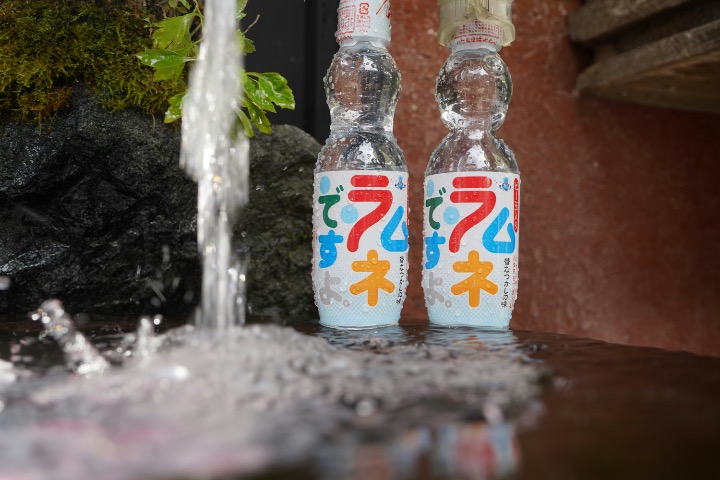
Cool Down the Tasty Way
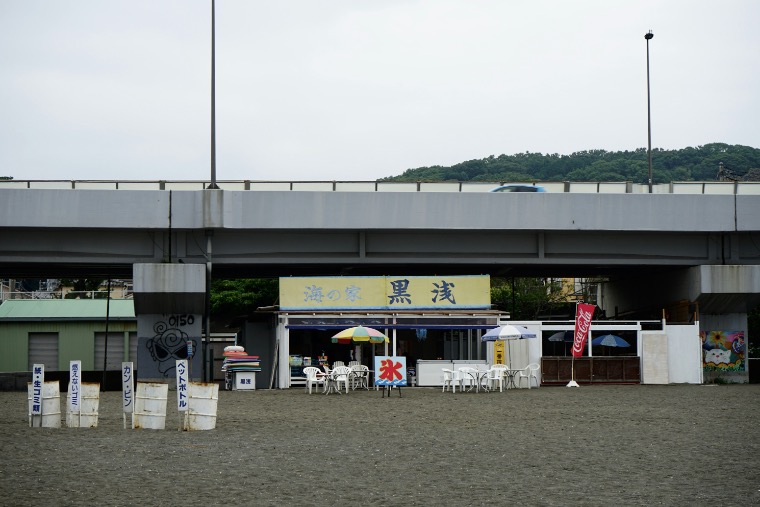
Summer in Japan can be intense, but the country’s seasonal food culture offers a refreshing way to handle the heat. Be it with a cold noodle dish at a local restaurant or a limited-edition drink from the nearest konbini, these small details make hot summer days a lot more enjoyable.
Paying attention to what’s in season gives a deeper connection to how people live, eat, and stay balanced during the warmer months. For anyone having a Japanese summer, exploring these seasonal flavors is a great (and delicious!) way to experience the culture beyond sightseeing or work.
🍉 Craving a real taste of summer in Japan?
An internship in Japan shouldn’t be just about work, it’s also a chance to explore seasonal traditions, starting with what’s on your plate. If you’re ready to experience Japanese culture from the inside out, join the program or get in touch with us to learn more about your internship options!



